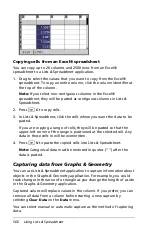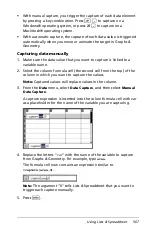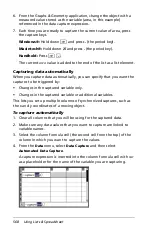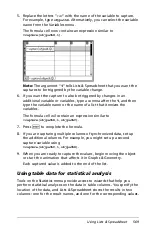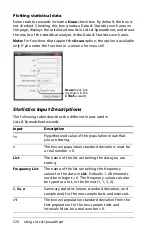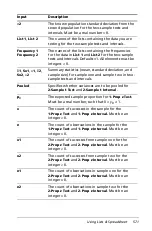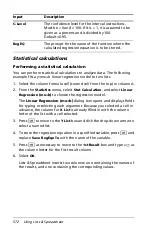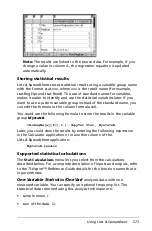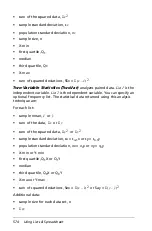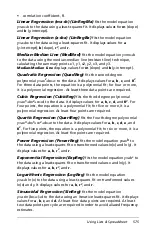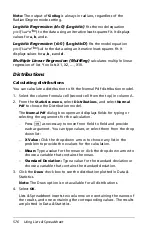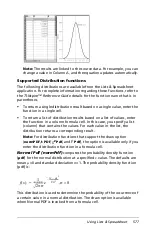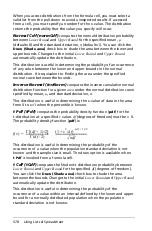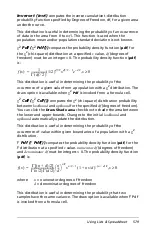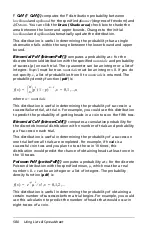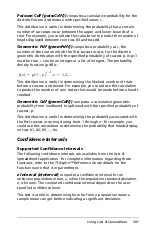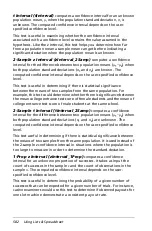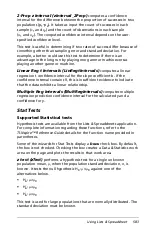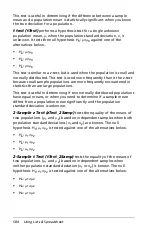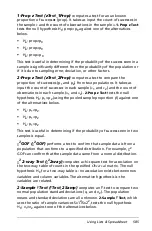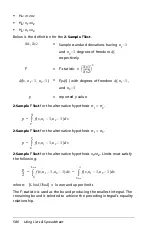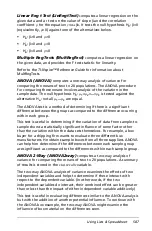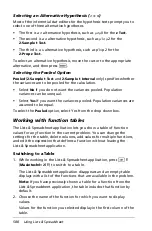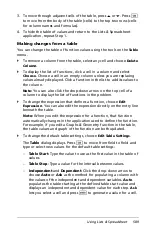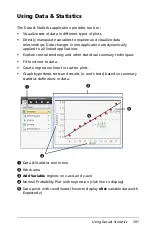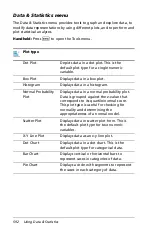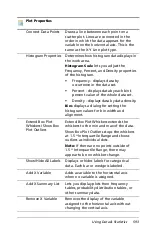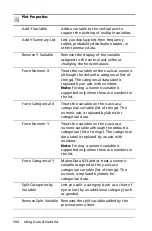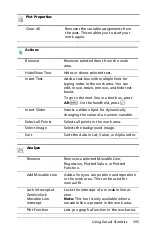
580
Using Lists & Spreadsheet
F
Cdf (
F
Cdf())
computes the
F
distribution probability between
lowBound
and
upBound
for the specified
dfnumer
(degrees of freedom) and
dfDenom
. You can click the
Draw (Shade area)
check box to shade the
area between the lower and upper bounds. Changes to the initial
lowBound
and
upBound
automatically update the distribution.
This distribution is useful in determining the probability that a single
observation falls within the range between the lower bound and upper
bound.
Binomial Pdf (binomPdf())
computes a probability at
x
for the
discrete binomial distribution with the specified
numtrials
and probability
of success (
p
) on each trial. The
x
parameter can be an integer or a list of
integers. 0
{
p
{
1 must be true.
numtrials
must be an integer > 0. If you do
not specify
x
, a list of probabilities from 0 to
numtrials
is returned. The
probability density function (
) is:
where
n = numtrials
This distribution is useful in determining the probability of success in a
success/failure trial, at trial
n
. For example, you could use this distribution
to predict the probability of getting heads in a coin toss on the fifth toss.
Binomial Cdf (binomCdf())
computes a cumulative probability for
the discrete binomial distribution with
n
number of trials and probability
p
of success on each trial.
This distribution is useful in determining the probability of a success on
one trial before all trials are completed. For example, if heads is a
successful coin toss and you plan to toss the coin 10 times, this
distribution would predict the chance of obtaining heads at least once in
the 10 tosses.
Poisson Pdf (poissPdf())
computes a probability at
x
for the discrete
Poisson distribution with the specified mean,
m
, which must be a real
number > 0.
x
can be an integer or a list of integers. The probability
density function (
) is:
This distribution is useful in determining the probability of obtaining a
certain number of successes before a trial begins. For example, you could
use this calculation to predict the number of heads that would occur in
eight tosses of a coin.
f x
( )
n
x
⎝ ⎠
⎛ ⎞
p
x
1
p
–
(
)
n x
–
x
,
0,1,...,
n
=
=
f x
( )
e
μ
–
μ
x
x
!
⁄
x
,
0,1,2,...
=
=
Summary of Contents for TI-Nspire
Page 38: ...26 Setting up the TI Nspire Navigator Teacher Software ...
Page 46: ...34 Getting started with the TI Nspire Navigator Teacher Software ...
Page 84: ...72 Using the Content Workspace ...
Page 180: ...168 Capturing Screens ...
Page 256: ...244 Embedding documents in web pages ...
Page 336: ...324 Polling students ...
Page 374: ...362 Using the Review Workspace ...
Page 436: ...424 Calculator ...
Page 450: ...438 Using Variables ...
Page 602: ...590 Using Lists Spreadsheet ...
Page 676: ...664 Using Notes You can also change the sample size and restart the sampling ...
Page 684: ...672 Libraries ...
Page 714: ...702 Programming ...
Page 828: ...816 Data Collection and Analysis ...
Page 846: ...834 Regulatory Information ...
Page 848: ...836 ...

